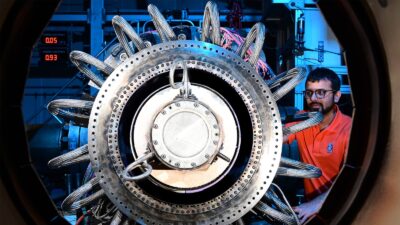Utility companies are generally considered to be the market’s most defensive stocks. The supply and management of utility assets is usually pretty predictable, and the industry works on multi-year contracts, which makes these businesses the perfect income investments. Managers know roughly how much income their businesses should be generating every year, giving them plenty of headroom to set a sensible dividend policy.
Unfortunately, this thesis has fallen apart for UK utilities over the past few years. Companies have been buffeted from all sides by changing regulation, rising costs and disruption across the industry making trading challenging to predict, and dividends are now under pressure.
Adapting to changes
To try and deal with the uncertainty stalking the industry, FTSE 100 utility giant SSE (LSE: SSE) was planning to merge its energy retail arm with rival Npower. Managers believed that by combining forces, the new larger entity would be able to beat off competitors and offer an unrivalled service.
However, the deal has now fallen apart because the two parties could not agree on the merger terms.
I think the fact that the deal has fallen apart shows just how difficult it is becoming out there for energy companies to operate, and this could be bad news for SSE’s market-leading dividend yield.
Dividend champion
Right now, shares in SSE support a dividend yield of 9%. This might look attractive at first glance, but before you get excited, this is a historical figure. Yes, for calendar 2018 (fiscal 2019), the shares support a dividend yield of 9%. However, City analysts have pencilled in a reduction in the distribution of 18% for the group’s 2020 financial year. On this basis, the shares support a forward dividend yield of 7.3%.
But I think SSE’s dividend payout could fall further in the years ahead.
According to my numbers, every year for the past five, SSE’s total dividend payout to investors has not been covered by free cash flow from operations. The company has been borrowing heavily to finance the gap between spending, both on capital projects and returns to investors.
As a result, net debt has almost doubled since 2012 and net gearing, the ratio of debt to total shareholder equity, has increased from 100% to more than 200%.
Borrowing too much
In my opinion, it can only be a matter of time before the company has to reconsider its dividend policy and reduce the amount of money going back to investors.
At the current trajectory, the rate of debt in the business is going to double again over the next five years, and rising interest rates will mean that the cost of this debt is only going to increase. So, the company could be forced to make a move even if it does not want to. That’s without considering the impact the government’s recently introduced price cap will have on its operations.
Put simply, SSE’s shaky finances worry me, and I’m staying away from the stock’s market-beating dividend yield for this reason.







